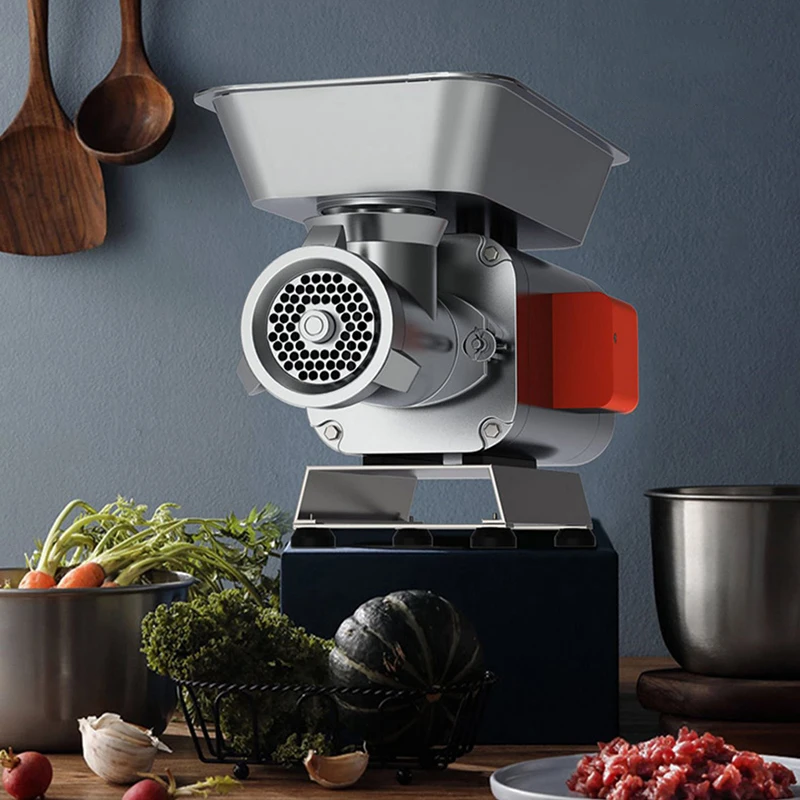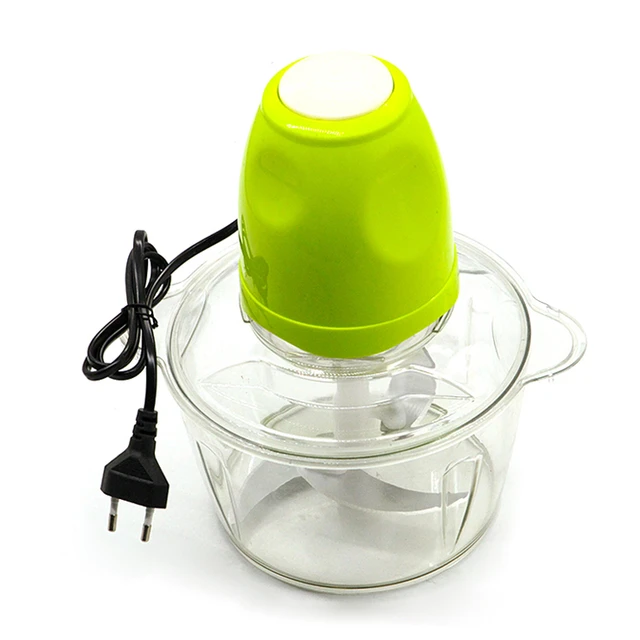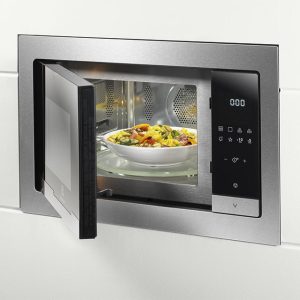
In today’s fast-paced world, the convenience of a food processor can be extremely valuable. It can chop, slice, and puree in seconds, saving both time and effort in the kitchen. However, not everyone has a food processor, and that doesn’t mean you can’t still create amazing dishes. There are many alternative tools and methods that can substitute for a food processor. If you find yourself without this modern kitchen appliance, don’t worry! This article will provide you with various techniques and tips to manage without one, ensuring you can still prepare delicious meals without compromising on quality.
Using a Blender as an Alternative
Versatility of Blenders
Blenders can be a fantastic substitute for food processors in many recipes, though it’s important to recognize their limitations. Blenders are perfect for liquid-based tasks such as making smoothies, soups, and sauces. They can create a fine puree and can handle a wide variety of ingredients.
Adjusting for Blenders
When using a blender instead of a food processor, you may need to make some adjustments. For larger quantities of ingredients, you may have to blend in batches to ensure everything is evenly processed. Be sure to add enough liquid, as blenders require fluids to properly circulate the ingredients. If your dish is intended to be thicker, like a hummus or pate, you can still use a blender by adding liquids slowly to maintain the desired consistency.
Cleaning Tips
One significant advantage of using a blender is its ease of cleaning. Unlike food processors, which can have multiple components, a blender typically consists of a jar, blade, and lid, which can be quickly and easily cleaned.
Utilizing a Hand Grater
Benefits of Hand Graters
Hand graters are among the simplest tools that can substitute for a food processor. They are compact, require no electricity, and are very versatile. With a hand grater, you can grate cheese, zest fruits, and even grate vegetables such as carrots and zucchini for salads or baking.
Types of Hand Graters
There are various types of hand graters, including box graters, microplanes, and rotary graters. Box graters are multi-functional with different sides for different grating sizes, whereas microplanes are perfect for fine grating citrus zest or hard cheeses. Rotary graters are ideal for cheese and chocolate, making the task quicker and safer for fingers.
Hand Grater Drawbacks
The primary downside of using a hand grater is the physical effort required, especially for harder vegetables or larger quantities. The risk of injury is also higher, so it’s essential to use a hand guard and be cautious while grating.
Embracing the Mortar and Pestle
Traditional Uses
The mortar and pestle is one of the oldest culinary tools, dating back thousands of years. Though it requires manual effort, this tool is exceptional for grinding spices, making pesto, and crushing garlic.
Grinding Spices
For fresh, aromatic dishes, grinding your own spices with a mortar and pestle can make a substantial difference. Unlike pre-ground spices that quickly lose their potency, freshly ground spices retain their intense flavors and aromas. This can elevate your cooking to the next level.
Making Guacamole and Pesto
Mortar and pestles are also ideal for making guacamole and pesto, allowing you to achieve a rustic, chunky texture that food processors might pureé too smoothly. This method not only enhances flavor through the manual process but also allows for better control over the consistency of your dish.
Knife Skills: The Ultimate Kitchen Essential
Precision and Control
In the absence of a food processor, your knife skills become incredibly important. Developing strong knife skills allows you to mince, chop, dice, and julienne ingredients efficiently and uniformly, ensuring an even cook and a visually appealing dish.
Essential Knife Techniques
Learning basic knife techniques can replace many functions of a food processor. Mincing garlic, dicing onions, and julienning carrots become easier with practice. Investing in a good-quality chef’s knife and keeping it sharpened can greatly enhance your efficiency and enjoyment in the kitchen.
Practice Makes Perfect
Improving your knife skills takes time and practice. By regularly cooking and attempting different techniques, you’ll develop better control and speed. Classes or online tutorials can also provide guidance and inspiration.
Manual Hand Mixer for Baking
Beating and Whisking
For baking, manual hand mixers can be an excellent alternative to food processors, especially for beating eggs and mixing dough. They allow for better control over texture and consistency, essential elements in baking.
Creaming Butter and Sugar
Manual hand mixers excel at creaming butter and sugar, a crucial step in many baking recipes. By hand, it provides a different texture that can integrate air into the batter more effectively, resulting in lighter, fluffier baked goods.
Practical Considerations
Although using a manual hand mixer may take longer than a food processor, the improved control it offers often outweighs the extra effort. Moreover, they are easy to clean and take up less storage space.
Go Old-School with a Rolling Pin and Mallet
Crushing Tasks
A rolling pin and mallet can effectively replace a food processor for tasks such as crushing cookies for a crust or cracking nuts. By placing the ingredients in a plastic bag or between two sheets of parchment paper, you can use these tools to crush or flatten them to the desired size.
Dough Rolling and Flattening
For pastry tasks, a rolling pin is essential. Whether you’re rolling out pie crusts, cookie dough, or pizza bases, a rolling pin allows you to achieve an even thickness, essential for consistent baking.
Meat Tenderizing
A mallet can also serve to tenderize meat, breaking down fibers and making it more flavorful and easier to chew. This function is particularly essential for certain cuts of meat that are tougher and require additional preparation.
Pureeing with a Potato Masher
Vegetable and Fruit Pureés
A potato masher isn’t just for mashed potatoes. This tool can also be used to puree soft fruits and cooked vegetables, making it a versatile addition to your kitchen. For instance, you can use it to mash avocados for guacamole or to create fruit purees for sauces and desserts.
Bean Purees
If you’re making bean-based dishes like refried beans or hummus, a potato masher can help you achieve a chunky, rustic texture. While it may not create a completely smooth puree, it adds a unique homemade quality to your dishes that some may actually prefer.
Lightweight and Easy to Use
Potato mashers are lightweight, inexpensive, and straightforward to use. They require no electricity and are easy to clean, making them a practical solution for those without a food processor.
Making Pastry with a Pastry Cutter
Blending Ingredients
A pastry cutter, also known as a pastry blender, is a great tool for those who love to bake. It allows you to blend cold butter into flour to create dough for pie crusts, biscuits, and scones. This tool helps create a flaky texture by cutting the butter into small pieces without melting it.
Alternative Uses
Aside from pastry, you can use a pastry cutter to mash eggs for egg salad, crumble toppings for desserts, or even chop nuts if you don’t have a knife handy. It’s a multi-purpose tool that can replace a food processor for specific tasks.
Precision
Using a pastry cutter allows for better precision and control over the consistency of your dough, which is crucial for achieving the right texture in baked goods.
 Employing a Manual Food Mill
Employing a Manual Food Mill
Versatility and Functionality
A manual food mill can handle many of the tasks typically assigned to a food processor, such as mashing, straining, and pureeing. It’s particularly useful for making foods like applesauce, tomato sauce, and baby food.
Interchangeable Discs
Many food mills come with interchangeable discs that allow you to choose the fineness of your puree. This flexibility can be very useful for different recipes, giving you better control over the final product.
Effort and Maintenance
Food mills do require a bit more manual effort compared to food processors. However, they are relatively easy to maintain and clean compared to the multiple parts of a food processor.
Grinders for Meat and Spices
Freshly Ground Meat
While a food processor can grind meat, a meat grinder is a superior alternative. It allows you to select the cut and control the fat content, essential for making sausages, meatballs, and burgers.
Spice Grinding
A dedicated spice grinder can replace the need for a food processor when it comes to grinding small amounts of spices, nuts, and seeds. Freshly ground spices can dramatically enhance the flavors in your cooking.
Benefits of Manual Grinders
Manual grinders may require more effort, but they deliver excellent results. They also tend to be less costly and more durable, making them a worthwhile investment for serious cooks.
Conclusion: Thriving Without a Food Processor
So, what to do if you don’t have a food processor? As we’ve explored, there are numerous tools and techniques that can substitute for a food processor, each with its own set of benefits and limitations. Blenders, hand graters, mortar and pestles, and skillful knife techniques can all be employed to chop, dice, puree, and grind your ingredients to perfection. Manual hand mixers, rolling pins, potato mashers, pastry cutters, food mills, and grinders each offer specialized functions that can execute specific tasks typically performed by food processors.







